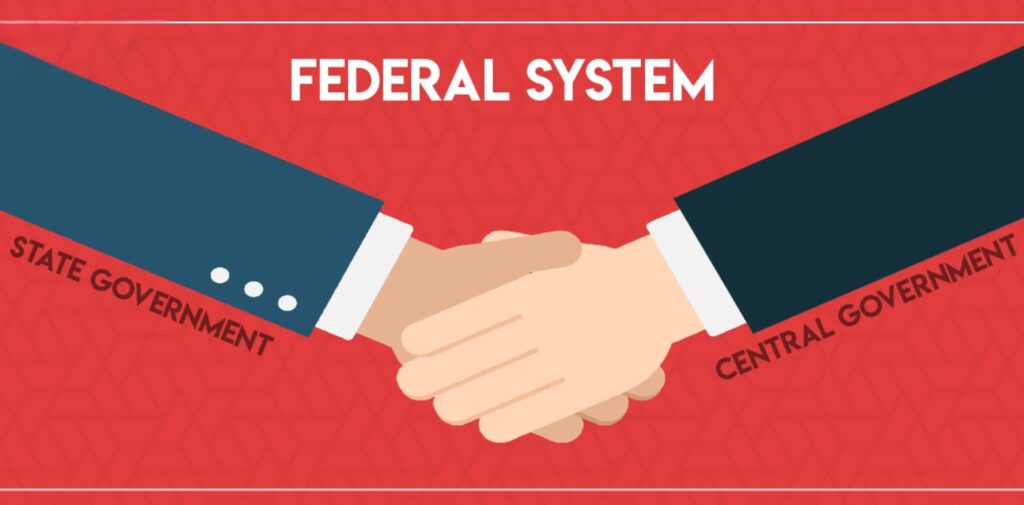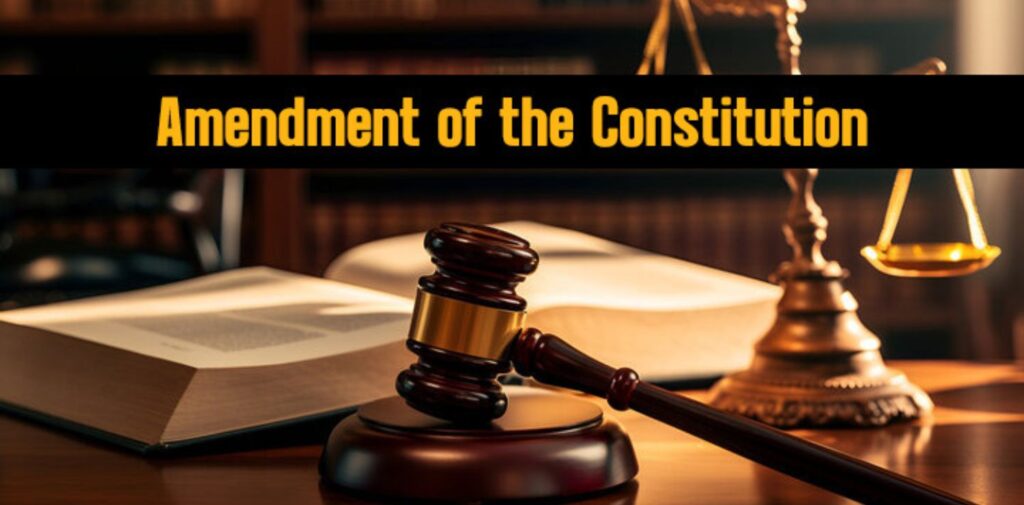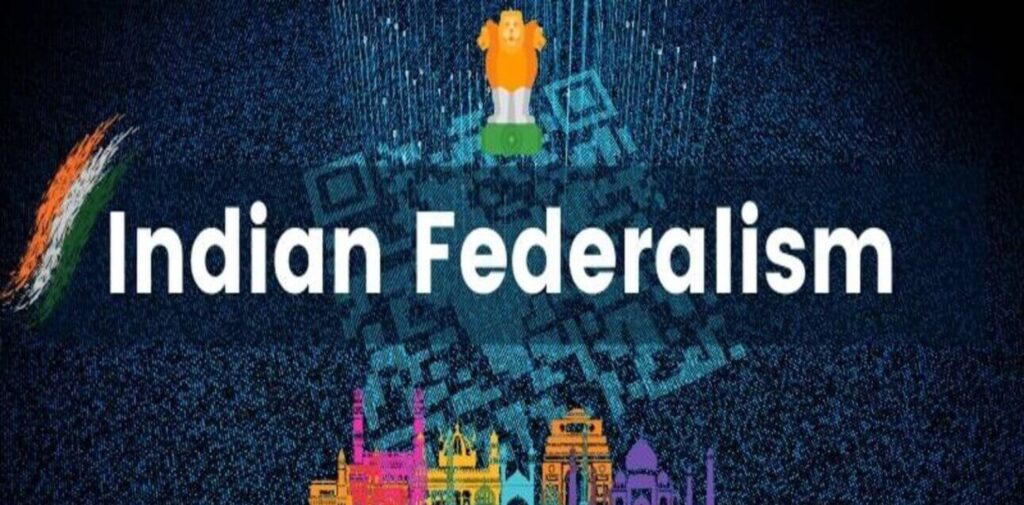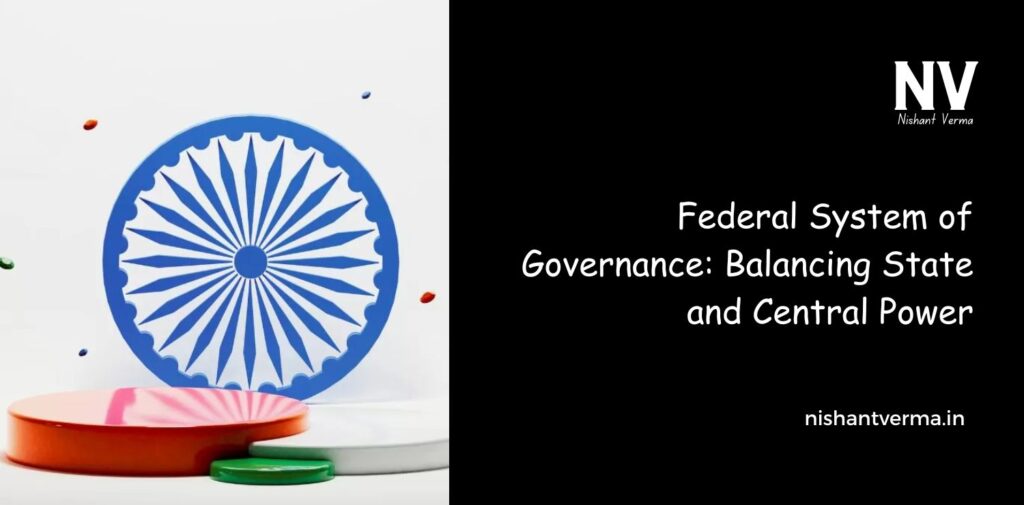India is a vast and diverse country, and its system of governance is designed to accommodate this diversity. One of the key features of India’s political system is its federal system of governance. This means that power is shared between the central government (located in New Delhi) and the state governments (which govern individual states). In this article, we will understand how the federal system works in India, how it balances power between the central and state governments, and why it is important for the country’s democracy and development.
What is a Federal System?
A federal system of governance is a system in which two levels of government share authority over the same territory. In India, this means that both the central government and the state governments have the power to make laws and decisions on different matters.
Imagine India like a big puzzle made up of many pieces, with each piece representing a state. The central government looks after the whole puzzle, while each state takes care of its own piece. Both the central and state governments have their own responsibilities, and they must work together to ensure that the country runs smoothly.

How Does the Federal System Work in India?
India’s federal system is guided by the Constitution of India, which was adopted in 1950. The Constitution sets out the rules for how power is divided between the central and state governments. Let’s look at some important features of India’s federal system:
Division of Powers
The Constitution divides the powers between the central and state governments through three lists:
- Union List: This list contains subjects on which only the central government can make laws. These subjects are of national importance, such as defense, foreign affairs, and currency.
- State List: This list includes subjects on which only state governments can make laws. These topics are mostly local issues, such as police, agriculture, and health.
- Concurrent List: This list contains subjects on which both the central and state governments can make laws. These topics are important for both the national and state levels, such as education, family law, and criminal law.
This division of powers ensures that both levels of government have a clear area of responsibility, but sometimes they may need to work together to handle overlapping issues.
Supremacy of the Constitution
In the event of a conflict between central and state laws, the Constitution of India is the final authority. The central government’s laws usually take precedence over state laws if there is a conflict. This ensures that the country remains unified, even if different states have different needs or preferences.
For example, if a state passes a law that goes against the Constitution or national law, the central government can challenge it in the courts, and the law can be struck down.

Power to Amend the Constitution
The Constitution of India can be amended (changed) to meet the changing needs of the country. However, to change the provisions relating to the distribution of powers between the central and state governments, a special procedure is required. This ensures that changes to the federal system are not made easily and require consensus from both levels of government.
The Role of the Central Government
The central government is responsible for running the country as a whole. It looks after matters that affect the entire nation, such as defense, foreign relations, and national security. The central government is also responsible for creating laws and policies that apply to all the states and territories of India.
The central government consists of three branches:
- Executive: The President, the Prime Minister, and the Council of Ministers.
- Legislature: The Parliament, which includes the Lok Sabha (House of the People) and Rajya Sabha (Council of States).
- Judiciary: The Supreme Court of India, which ensures that the laws are followed and resolves disputes between the central and state governments.
The central government has the power to make decisions that affect the entire nation. For example, it can impose taxes, manage the military, and represent India in international affairs. It also provides financial assistance to states that need help with development or dealing with disasters.
The Role of State Governments
While the central government looks after national matters, state governments are responsible for issues that affect people at the local level. Each state in India has its own government, which works like a mini-central government but focuses on state-specific issues.
State governments are made up of:
- Executive: The Governor (appointed by the President), Chief Minister, and the Council of Ministers.
- Legislature: The State Legislative Assembly (Vidhan Sabha) and, in some states, a State Legislative Council (Vidhan Parishad).
- Judiciary: The High Court, which deals with matters within the state’s jurisdiction.
State governments are responsible for managing matters such as:
- Education: Setting up schools, colleges, and universities.
- Healthcare: Building hospitals, clinics, and providing public health services.
- Police and law enforcement: Ensuring the safety and security of the people.
- Agriculture: Implementing farming policies and supporting farmers.
State governments play a vital role in addressing the needs and concerns of their local populations.
The Need for Balance: How the Federal System Works in Practice
The federal system of governance in India aims to strike a balance between the central and state governments. This balance is important because it allows the central government to maintain national unity and ensure that the country runs smoothly, while also giving state governments the freedom to address local issues.
- Cooperative Federalism: In India, federalism is not just about dividing powers; it’s also about working together. This idea is called cooperative federalism, where the central and state governments collaborate to solve problems. For example, both levels of government work together on issues like education, health, and infrastructure development. The central government provides funding, while the state governments implement policies on the ground.
- Disputes and Conflicts: Despite the cooperative nature of federalism, conflicts sometimes arise between the central and state governments. These conflicts usually occur when there is disagreement over which government should have control over a particular issue. In such cases, the Supreme Court of India plays a crucial role in resolving disputes and ensuring that both levels of government follow the Constitution. For example, when a state feels that the central government’s laws are interfering with its rights, it can approach the Supreme Court for a solution.
- Emergency Powers of the Central Government: In times of crisis, such as a natural disaster or national security threat, the central government has special powers. During an emergency, the central government can take control over areas that are usually the responsibility of state governments. This ensures that quick decisions can be made to protect the country’s safety and security. However, these powers are not used often and are meant only for exceptional situations.

The Importance of Federalism in India
The federal system of governance is vital for India’s political and social stability. Here are some reasons why:
- Cultural and Regional Diversity: India is a country with diverse cultures, languages, religions, and traditions. A federal system allows each state to preserve its unique identity and manage local affairs according to the needs of its people. This helps maintain peace and harmony among the country’s many communities.
- Promotes Local Development: By giving state governments the power to manage local affairs, federalism allows for more targeted and effective development. States can implement policies that suit their specific needs, whether it’s improving education, healthcare, or infrastructure.
- Strengthens Democracy: Federalism also strengthens democracy by ensuring that power is not concentrated in one place. By decentralizing power, states and local governments can become more responsive to the needs of their people. This allows for more citizen participation in the decision-making process.
Conclusion
India’s federal system of governance is designed to balance the power between the central and state governments. This balance helps ensure that both levels of government can address national and local issues effectively. Federalism allows India to maintain its unity despite its vast diversity, while also enabling states to focus on the needs of their populations. By working together, both the central and state governments play an important role in shaping the future of India and its development.
In a country as diverse and large as India, the federal system is key to maintaining harmony, promoting development, and ensuring that every citizen has a voice in the governance of the nation.




